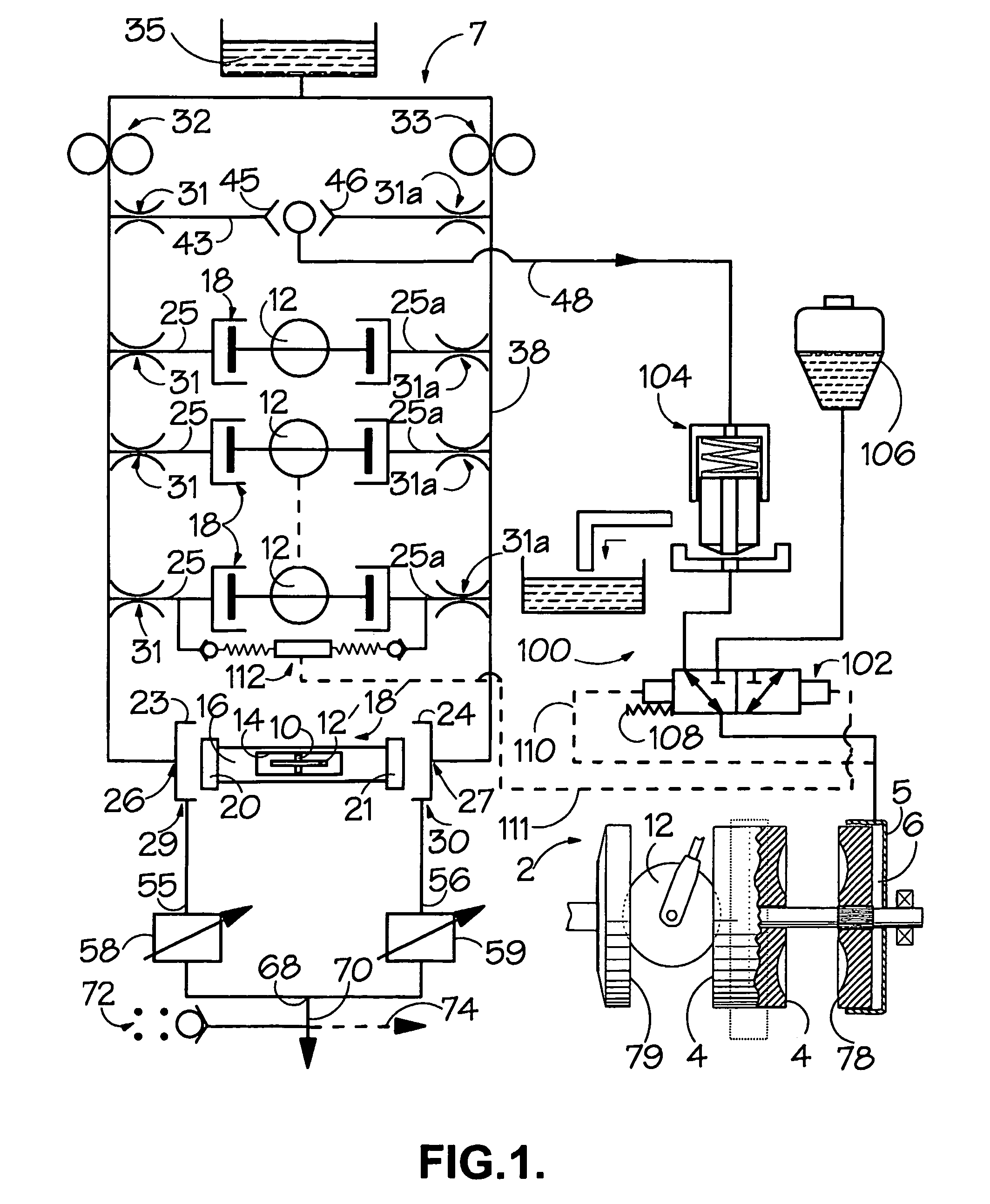Hydraulic control circuit for a variator
a control circuit and variator technology, applied in the direction of friction gearings, gearing elements, gearings, etc., can solve the problems of large energy loss, variator failure, and excessively high traction coefficient in energy terms
- Summary
- Abstract
- Description
- Claims
- Application Information
AI Technical Summary
Benefits of technology
Problems solved by technology
Method used
Image
Examples
Embodiment Construction
[0046]A variator 2 schematically illustrated in FIG. 1 comprises a pair of input rotor discs 78,79, an output rotor disc 4 and a plurality of rollers 12 situated therebetween for transmission of torque in a manner well known to those skilled in the art and therefore not described in detail herein. At the end of the variator 2 there is provided an end-load assembly 5 which, in its representative form, comprises a simple hydraulic chamber 6 fed with hydraulic fluid at pressure. The pressure in chamber 6 acts to load disc 78 axially such that it clamps the rollers 12 between the discs 4, 78, 79 and enables transmission of torque across the variator. As mentioned above, the magnitude of the end load is to be adjusted in order to achieve an appropriate traction coefficient.
[0047]Turning now to the control circuit 7 of the present embodiment of the invention, it will be appreciated that the axle 10 of a master roller 12′ of the variator is mounted in the cavity 14 of a hollow shaft 16 of ...
PUM
 Login to View More
Login to View More Abstract
Description
Claims
Application Information
 Login to View More
Login to View More - R&D
- Intellectual Property
- Life Sciences
- Materials
- Tech Scout
- Unparalleled Data Quality
- Higher Quality Content
- 60% Fewer Hallucinations
Browse by: Latest US Patents, China's latest patents, Technical Efficacy Thesaurus, Application Domain, Technology Topic, Popular Technical Reports.
© 2025 PatSnap. All rights reserved.Legal|Privacy policy|Modern Slavery Act Transparency Statement|Sitemap|About US| Contact US: help@patsnap.com



